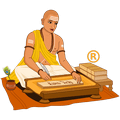























Sunrise06:59 AM
Sunset05:28 PM
Moonrise06:22 AM, Mar 03
Moonset03:22 PM
Shaka Samvat-2083 Manmatha
Vikram Samvat-1948 Durmati
Gujarati Samvat-1949 Parabhava
Amanta MonthChaitra
Purnimanta MonthVaishakha
WeekdayGuruwara
PakshaKrishna Paksha
TithiTrayodashi upto 11:00 AM
NakshatraRevati upto Full Night
YogaVaidhriti upto 08:08 AM
KaranaVanija upto 11:00 AM
KaranaVishti upto 11:41 PM
Pravishte/Gate14
Rahu Kalam01:32 PM to 02:51 PM
Gulikai Kalam09:36 AM to 10:55 AM
Yamaganda06:59 AM to 08:18 AM
Abhijit11:52 AM to 12:34 PM
Dur Muhurtam10:29 AM to 11:11 AM
Dur Muhurtam02:40 PM to 03:22 PM
Amrit Kalam06:17 AM, Mar 03 to 08:01 AM, Mar 03
Varjyam07:53 PM to 09:37 PM
Notes: All timings are represented in 12-hour notation in local time of Oslo, Norway with DST adjustment (if applicable).
Hours which are past midnight are suffixed with next day date. In Panchang day starts and ends with sunrise.


 Makara 15:25
Makara 15:25 Dhanishtha 27:33+
Dhanishtha 27:33+

 Kumbha
Kumbha Shatabhisha 28:11+
Shatabhisha 28:11+

 Meena
Meena Revati
Revati

 Vrishabha
Vrishabha Krittika 17:02
Krittika 17:02

 Vrishabha 09:46
Vrishabha 09:46 Mrigashira 23:19
Mrigashira 23:19

 Mithuna
Mithuna Ardra 26:17+
Ardra 26:17+

 Mithuna 22:16
Mithuna 22:16 Punarvasu 28:52+
Punarvasu 28:52+

 Karka
Karka Pushya 06:55
Pushya 06:55

 Simha
Simha Magha 08:53
Magha 08:53

 Tula 17:19
Tula 17:19 Vishakha 22:36
Vishakha 22:36

 Vrishchika
Vrishchika Anuradha 19:44
Anuradha 19:44

 Vrishchika 16:57
Vrishchika 16:57 Jyeshtha 16:57
Jyeshtha 16:57

 Dhanu 17:51
Dhanu 17:51 P Ashadha 12:19
P Ashadha 12:19

 Makara
Makara U Ashadha 10:43
U Ashadha 10:43

 Makara 21:29
Makara 21:29 Shravana 09:43
Shravana 09:43

 Kumbha
Kumbha Dhanishtha 09:25
Dhanishtha 09:25

 Kumbha 28:31+
Kumbha 28:31+ Shatabhisha 09:47
Shatabhisha 09:47

 Meena
Meena P Bhadrapada 10:50
P Bhadrapada 10:50

 Meena 14:40
Meena 14:40 Revati 14:40
Revati 14:40

 Mesha 26:54+
Mesha 26:54+ Bharani 20:09
Bharani 20:09In Hindu Calendar, the day starts with local sunrise and ends with next day local sunrise. As sunrise time is different for all cities, Hindu Calendar made for one city is not valid for any other city. Hence it is important to use location based Hindu Calendar, like this website. Further, each Hindu day consists of five elements, which are called angas. These five elements are -
In Hindu Calendar, all five elements together are called Panchang. (In Sanskrit: Panchang = Pancha (five) + Ang (part)). Hence Hindu Calendar which shows all five elements for each day is called Panchang. In South India Panchang is known as Panchangam.
When Hindu Calendar includes Muslims, Sikh, Christian, Buddhist and Jain festivals, including national holidays, it is called as Indian Calendar.